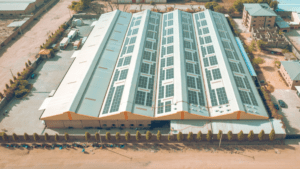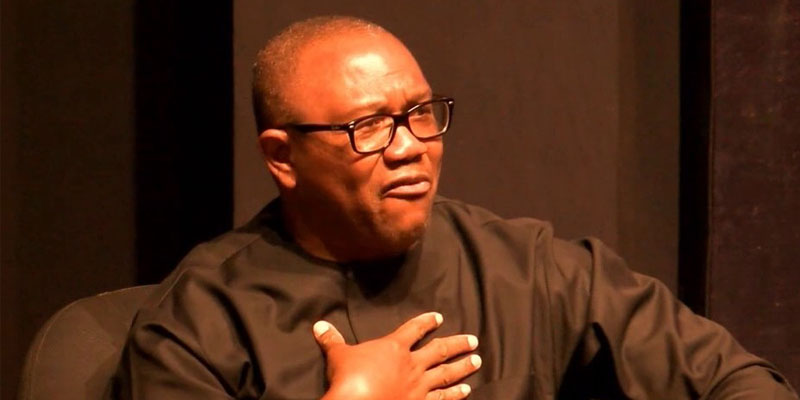As 53 Nigerian Communities Grope In Darkness And 670m Sub-Sahara Africans Remain Without Electricity, Obi Vows To End Power Failures
OpenLife Nigeria reports that despite multi trillion Naira investments in power by successive government in Nigeria between 1999 and 2021, no fewer than 53 communities in the Yewa North Local Government Area of Ogun State, South West Nigeria, have lamented the hardship of living in darkness for more than 100 years.
Besides federal government’s investments in power, there is also a World Bank Electrification Project in that part of Ogun State.
The landlords, residents, and business owners, who spoke to journalists, said they had never enjoyed power supply since the creation of the communities.
The affected communities include Alagbada, Fayoyi, Ajegunle, Erinpa 1, Erinpa 2, Abule Babalana, Sunwa Ajegunle, Mokoya/ Ogbungiri, Abule Anila, Abule Alata, Aruku, Pakoyi, Lashilo, Oloje, Idi Iroko, Abotokio, Kajola, Kajola- Alaga, Ijaka-Isale, and Ijaka– Oke.
Others are Ile – Ijoun, Eeja, Ile-Ika, Ijale – Ketu, Iyana Agbede, Oke Odo Tobolo, Tobolo, Ibiyan, Agbefa, Okuta Gogoro, Lafenwa, Anga, Akeru agbo Ogede, Ageru Abeobi, Akeru llukan, Akeru Ajiode, Oke Igbala / Ijege, Ikotun, Ologiri, Ojumo, Igbeme, Isagba, Orile Oke Igbooro, Orile Igbooro, Abule Kuse, Iselu, Iselu-Orile, Egbeda, Ibeku, Agbon Ojodu, Kodera and Asa.
It was learnt that the World Bank-facilitated electrification project in the area which has been abandoned, was awarded in 2007 under the National Energy Development Project through the Project Management Unit of the Transmission Company of Nigeria.
The project was expected to provide and install a 50/25 KVA pole-mounted transformer across the 53 communities with the distribution of free meters to residents.
A visit to some of the communities on Monday revealed that the project was grounded.
Residents insisted that the project was a facade, as they were never connected to the national grid despite erecting poles, wires, and transformers in their communities.
However, during a probe panel, the Senate was told, that the Federal Government had invested a N2.74 trillion in Nigeria’s power sector in 16 years (1999 to 2015).
The investments were made during the regimes of former President Olusegun Obasanjo; his successor, late President Umaru Yar’Adua, and President Goodluck Jonathan.
In an overview of Nigeria’s Electricity Problem By Dr Reuben Abati, the main problem with Nigeria’s electricity sector is that it has failed consistently to generate, transmit and distribute enough electricity to power its development process and accelerate economic growth. Between 1999 and 2007, President Olusegun Obasanjo focused on the reform of the electricity sector as one of the major priorities of his administration. Gas-powered plants were set up across the country under his watch, turbines and other equipment were imported.
His government laid the foundation for reform in the power sector but could not complete the process, particularly the privatization of the power sector. Obasanjo’s legacy includes the National Electric Power Policy (NEPP) of 2001, the National Electric Power Sector Reform Act of 2005 which established the Nigerian Electricity Regulatory Commission (NERC), and the establishment of the Power Holding Company of Nigeria (PHCN), to replace the notorious National Electricity Power Authority (NEPA). The PHCN was later unbundled into 18 successor companies. By the time President Obasanjo left office in 2007, power generation in the country had increased from about 1, 200 MW in 1999 to 4, 000 MW in 2007. For a country of Nigeria’s size and population, this was not enough to transform the country. Obasanjo was succeeded by President Yar’Adua.
In the course of his campaign for Presidential office, Alhaji Umaru Musa Yar’Adua stressed the importance of the electricity sector as an engine of growth. He promised to declare a national emergency in the sector. He eventually didn’t declare an emergency but shortly after assuming office in 2007, President Yar’Adua established a Presidential Committee for the accelerated expansion of Nigeria’s power infrastructure with a mandate to ensure the delivery of 6, 000 additional megawatts within 18 months and an extra 11, 000 MW by 2011. By the time President Yar’Adua gave this directive, Nigeria’s power generation capacity was down to 3,000 MW per day. South Africa with a much smaller population was at the time generating 36,000 MW. Egypt with a population of 78 million also had a generating capacity of 36,000 MW. The Yar’Adua Committee which was given 18 days to do its work, submitted its report one year later!
The House of Representatives also conducted a probe of the electricity sector. The House Committee on Power led by Hon. Ndudi Elumelu accused the Obasanjo administration of having spent over $10 billion on the electricity sector without having much to show for it. The Committee disclosed that between 2000 and 2007, the Obasanjo administration spent over $10 billion on various projects in the power sector. The Elumelu Committee raised questions and demanded answers. The Presidential Committee meanwhile recommended that the country would still need about $85 billion to meet the target of 20,000 MW generating capacity as recommended by the Vision 2020 Committee. President Yar’Adua in the course of it all, ordered a probe of the Nigeria Electricity Regulatory Commission (NERC). The Chairman of the NERC and six commissioners of the agency were suspended from office and invited for questioning.
President Yar’Adua’s government soon entered into discussions with General Electric (GE) and later signed a Memorandum of Understanding with the German Government on power development projects in Nigeria. Siemens was one of the six German companies included in that MOU. The Government also launched a Gas Master Plan to address the problem of gas supply to the Papalanto, Omotosho and Geregu power plants built by the Obasanjo government. Contracts worth over $660 million were awarded, but despite all its good intentions, the Yar’Adua government could not make much difference. Power supply remained epileptic in Nigeria. There are many who believe that the efforts of the Yar’Adua administration were abbreviated by a lack of urgency occasioned by the President’s health challenges and the obsession of that administration with the past administration’s expenditure in the power sector. It was so bad that power equipment worth $5 billion that had been imported in 2,500 (or 800?) containers by the Obasanjo administration, which arrived three days after President Obasanjo left office were abandoned at the ports for three years, Taxpayers incurred a demurrage of N4 billion!
President Yar’Adua was succeeded by Dr. Goodluck Ebele Jonathan. As former Chairman of the National Economic Council and former Chair of the National Council on Privatization, Jonathan was certainly privy to the Electricity Sector Road Map and the Power Sector Master Plan. He continued where his former boss stopped, but even more so, from where Obasanjo stopped, and by avoiding the ugly politics and blame game that had developed around the subject of electricity delivery in Nigeria, he was able to make significant progress in the areas of accelerated reform, policy execution, provision of power sector infrastructure, public-private sector partnership and privatization.
President Jonathan had threatened, right from his early days in power that he would privatize the PHCN, and reform the electricity sector. In due course, he launched a Power Sector Transformation Plan and gave full effect to the Nigeria Electricity Sector Regulatory Act of 2005. He commissioned and upgraded a number of power plants including the Azura-Edo power plant, the first fully privately owned Independent Power Plant in Nigeria. He re-organized the PHCN by selling off the Federal Government’s majority stakes in the 18 companies unbundled from PHCN in the shape of six Generation Companies (GENCOS), 11 Distribution Companies (DISCOs) and a Transmission Company owned fully by the Nigerian government. Private sector investors in the GENCOs and DISCOs paid as much as $3.3 billion for the acquired PHCN assets in what was considered an open and fair process even by international observers. Nigerian banks supported the process, investments were also attracted to the gas sector. By 2013, the power sector had resurrected with installed generation capacity at about 12.910 MW, but available capacity nevertheless remained at less than 7. 652 MW. Transmission capacity was 8,1000 MW while a distribution peak of 5,375 MW was recorded. Thus, the problem of low capacity utilization persisted.
President Goodluck Jonathan handed over to President Muhammadu Buhari in 2015. Like other Presidents before him since 1999, President Buhari even as a candidate promised to transform Nigeria’s power sector. In the run up to the 2015 elections, President Buhari in a document titled “Covenant with Nigerians” and also in the “APC Manifesto”, promised that “The APC government shall vigorously pursue the expansion of electricity generation and distribution of up to 40,000 MW in 4 to 8 years.” The promised figure was twice the Vision 2020 Committee projection of 20,000 MW by 2020. The reality is that the Buhari administration has not been able to deliver on that promise. In 2017, former Minister of Power, Housing and Works, Babatunde Fashola claimed that the government had achieved a record 5,074 MW in actual power generation. From 2015 to date, President Buhari has continued to give assurances that his administration will sort out the electricity sector crisis.
The administration has reportedly spent more than N900 billion on the power sector as intervention fund. It has signed a six-year contract with Siemens of Germany for an upgrade and technical input across the value chain to generate up to 25,000 MW in three phases. The Buhari administration accuses previous administrations – Obasanjo, Yar’Adua and Jonathan’s of wasting Nigerian resources on the power sector without results and the Jonathan administration of mismanaging the privatization process. It is alleged that over $6.8 trillion has been spent on Nigeria’s power sector since 1999. Meanwhile, the country remains literally in darkness. Many companies have had to relocate from Nigeria. Businesses, homes and families are compelled to provide their own electricity. The cost of diesel is high. Many lives have been lost to generator explosions. There are communities in Nigeria that have not seen electricity for seven years, simply because they are not connected to the national grid! The House of Representatives has asked President Buhari to declare a state of emergency in the electricity sector. The standard response has been to blame either the former ruling party, the PDP (1999- 2015) or the Jonathan privatization process or more specifically, the power distribution companies. In 2017, the Buhari government mooted the idea of probing the power sector from 1999- 2015.

Needless politicking, sentiments and emotions have proven to be the bane of the electricity sector in Nigeria. Every Minister of Power since 1999 has always been ready with an excuse for inefficiency. Babatunde Fashola, as Buhari’s Minister of Power, Works and Housing heaped the blame on the privatization process. Buhari’s NERC blames the DISCOs and even threatened to revoke their licences. This blame game continued last week with Fashola’s successor as Minister of Power, Engr Saleh Mamman threatening that the DISCOs are the problem of the electricity value-chain and if they do not sit up, their licences will be revoked. He says he has even sent a memo to the Federal Executive Council to that effect. The FEC should ignore his memo. Mamman doesn’t sound like he knows what he is talking about. Ignorance is bad in itself, but the kind of tripodal ignorance that has been demonstrated by the current Minister of Power is curious!
It seems to me that government needs to go beyond scapegoating, passing the buck, sentiments and politics, to address fundamental problems of the electricity sector, and cross-cutting issues in the entire value chain. There are consequential steps that should have been taken after the privatization exercise of 2013/2014 to deepen the transition process away from PHCN which the current administration has conveniently ignored. This is in part responsible for the distortions within the entire value chain. If the Minister of Power does not know what these are, he should consult the Bureau for Public Enterprises, the National Electricity Regulatory Council and the Vice President’s Office which oversees the National Council on Privatization. If he does not trust anyone in those departments, let him talk to Nasir el-Rufai, the Governor of Kaduna State who as Director General of BPE, at the time of the commencement of reforms in that sector can tell the story much better – that is, if he doesn’t choose to play convenient politics.
If el-Rufai plays politics with the matter, let him talk to Dr. Lanre Babalola and Bola Onagoruwa. For example, the Gas Production and supplies to the various Power Plants are still largely dependent on NGC/NNPC which are government-controlled and as usual cannot respond to the 24 hours need of the privatised power generating plants. Unfortunately, in the last 5 years, this critical component of the value chain of power generation has not been resolved by President Buhari’s Government. Gas Production and supplies is yet to be privatised and NNPC/FGN remain the major bureaucratic problem for the gas-based Electricity generating investors. Even the gas price in USD has not been allowed to be translated into appropriate naira tariff for the entire value chain of electricity supplies.
Recently we read in the media, that Federal Government has granted sovereign guarantee to NNPC to build gas pipeline from Ajaokuta to Kano (AKK) for $2.8 billion, with about two captive gas-powered generating plants along the gas pipeline. But any discerning observer of the industry will ask whether this AKK should be a priority now, when you can deploy the $2.8 bill to solve the immediate problems of the stranded 10 gas-powered generating plants in the hands of NIPP/Niger Delta Power Holding Company. It is certain that this $2.8 Billion project will not be completed in the next 3-4 years and may never get sufficient gas to reach Abuja nor Kano, when even Kaduna refinery built since 1989 with Crude Pipeline from Escravos has never gotten enough to refine Nigeria’s export crude on a daily basis. These are the issues each of the Ministers has refused to look into, focussing instead on chasing the DISCOS as the weeping child.
Is Minister Mamman aware at all of the existence of 10 power plants that are being managed by the Niger Delta Holding Company (NDHC), a limited liability company that is managed by public officers? The Minister of Power was quoted as saying Nigeria now has a generating capacity of 13,000 MW in 2020. In 2013, Nigeria had a generating capacity of 12,910 MW. What has been added since 2015? Even if 7,000 MHW is produced today, can TCN with her 330KV/132KV transmit that much to all the DISCOS? The answer is capital NO. The Minister pretends not to know that TCN is the weakest link between the GENCOS and DISCOS. The Minister should show us how much has gone into 330KV/132KV in the last 5 years across Nigeria.
The Federal Government could have sold 10 more power plants to increase capacity. It has not done so. Even then, the so-called claim of 13,000 MW is at best academic and fictitious. Minister Mamman claims that the Transmission Company of Nigeria (TCN) has a capacity to transmit 7,000 MW but it actually transmits about 5, 000 MW out of which the DISCOs can only take about 3,000MW. There is shortage of electricity in the country and so, high demand for limited supply has driven up prices and yet government is insisting on the withdrawal of subsidy and a hike in electricity tariffs by April 1. I don’t get it. No wonder all the private sectors, industrial and commercial houses generate electricity at about 70-85 Naira per kilowatt hour for themselves. But this has disenabled them from competing with other manufacturers around the world. This is one of the major reasons that the private sector must be allowed to take over the entire value chain of the electricity industry. Since 2015 that Yola DISCO has been returned to the Federal Government, it will interest the general public to hear from the Minister, how much investment in 132KVA, 33KVA and 11KVA infrastructure has been provided in the entire North East that Yola DISCO covers.
The Buhari government simply needs to move beyond politics and sentiments. If President Buhari succeeds in solving the electricity supply conundrum in Nigeria, that alone will be enough legacy for his administration. He should listen only to those who know. Engr. Saleh Mamman has absolutely no clue. I hope the Minister knows he is a member of the National Council on Privatisation and therefore cannot take any policy decision without NCP approval first.
Meanwhile, in KIGALI, Rwanda, experts have avered that solar mini grids can provide high-quality uninterrupted electricity to nearly half a billion people in unpowered or underserved communities and be a least-cost solution to close the energy access gap by 2030. But to realize the full potential of solar mini grids, governments and industry must work together to systemically identify mini grid opportunities, continue to drive costs down, and overcome barriers to financing.
Around 733 million people – mostly in Sub-Saharan Africa – still lack access to electricity, according to World Bank’s Energy Sector Management Assistance reports.
The pace of electrification has slowed down in recent years, due to the difficulties in reaching the remotest and most vulnerable populations, as well as the devastating effects of the COVID 19 pandemic. At the current rate of progress, 670 million people will remain without electricity by 2030.
“Now more than ever, solar mini grids are a core solution for closing the energy access gap,” said Riccardo Puliti, Infrastructure Vice President at the World Bank. “The World Bank has been scaling up its support to mini grids as part of helping countries develop comprehensive electrification programs. With $1.4 billion across 30 countries, our commitments to mini grids represent about one-quarter of total investment in mini grids by the public and private sector in our client countries. To realize mini grids’ full potential to connect half a billion people by 2030, several actions are needed, such as incorporating mini grids into national electrification plans and devising financing solutions adapted to mini grid projects’ risk profiles.”
The deployment of solar mini grids has seen an important acceleration, from around 50 per country per year in 2018 to more than 150 per country per year today, particularly in countries with the lowest rates of access to electricity. This is the result of falling costs of key components, the introduction of new digital solutions, a large and expanding cohort of highly capable mini grid developers, and growing economies of scale.
Solar mini grids have become the least-cost way to bring high-quality 24/7 electricity to towns and cities off the grid or experiencing regular power cuts. The cost of electricity generated by solar mini grids has gone down from $0.55/kWh in 2018 to $0.38/kWh today. Modern solar mini grids now provide enough electricity for life-changing electric appliances, such as refrigerators, welders, milling machines or e-vehicles. Mini grid operators can manage their systems remotely, and paidsmart meters enable customers to pay as they use the electricity. Connecting 490 million people to solar mini grids would avoid 1.2 billion tonnes of CO2 emissions.
Further acceleration is needed, however, to meet Sustainable Development Goal 7 (SDG7). Powering 490 million people by 2030 will require the construction of more than 217,000 mini grids at a cumulative cost of $127 billion. At current pace, only 44,800 new mini grids serving 80 million people will be built by 2030 at a total investment cost of $37 billion.
However, in the face of this, the presidential candidate of the Labour Party, Peter Obi, has said that national grid collapse will be a thing of history under his watch if elected as President in 2023.
The former governor of Anambra State said this in reaction to news of yet another collapse of the national grid, which he described as disturbing.
Proffering solution, Obi stated that his team has a strategic plan to progressively scale up power generation and the liberalisation of the transmission infrastructure in the country, to ensure that Nigerians enjoy adequate and stable power supply from 2023 onwards.
He tweeted on Wednesday, “The report of yet another national grid collapse is very disturbing to me, and is a reminder of the long rescue and recovery journey ahead of us. Effective power generation, transmission and distribution remain a national security issue.
“This also places power on the front burner of campaign and policy. Painfully, this latest episode is the 7th national grid collapse in 2022. As part of the Obi-Datti policy plan, we have put together a strategic plan to progressively scale up power generation, and the liberalisation of the transmission infrastructure in the country, to ensure that Nigerians enjoy adequate and stable power supply from 2023 onwards. Power is critical to the development and sustainability of all sectors of the national economy
“For us, power remains a top priority. Under my watch, national grid collapse will become a matter of history and a reference point for erstwhile administrations. -PO.”







